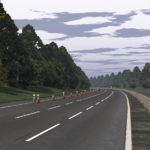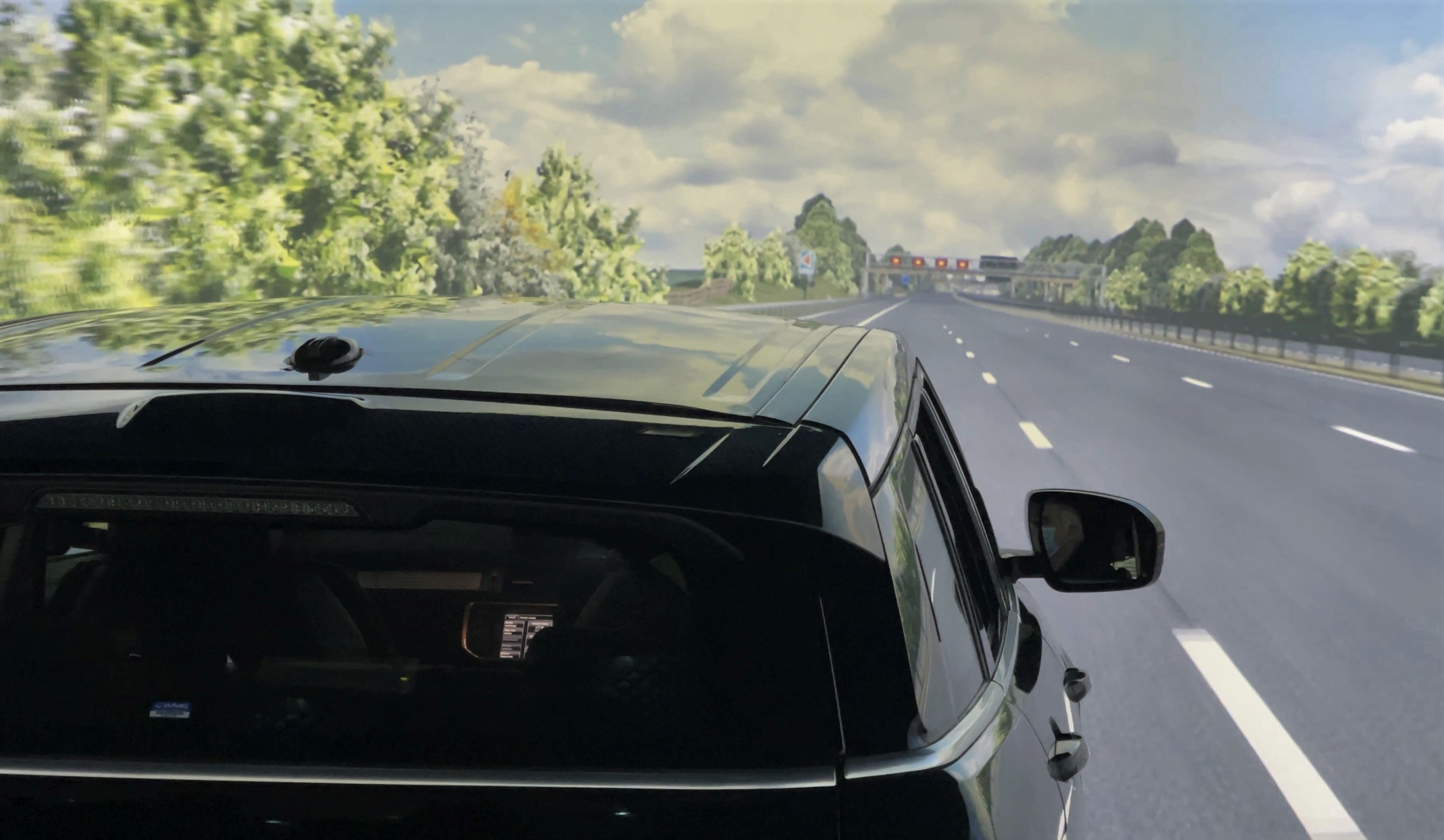At a Glance:
- WMG, a department of the University of Warwick, required an accurate virtual environment for their revolutionary Connected and Autonomous Vehicles (CAV) 3xD Simulator.
- These environments needed to cover key routes of the Midlands Future Mobility CAM testbed UK project, including a ten-kilometre stretch of the M42.
- Midlands Future Mobility is a 200-mile route between Coventry and Birmingham, which offers a combination of campus (mini-city), urban, rural and highways roads on which Connected and Automated Mobility (CAM) trials can be supported. Partners include: WMG, at the University of Warwick, Amey, AVL, Costain, Immense, Transport for West Midlands and Vodafone.
- Inclusion of key objects from the environment, such as kerbs, verges, bushes, vegetation, bridges, markings, and the electrical boxes housing the vehicle locations systems, was a key requirement.
- Agility 3 scanned three routes and provided WMG with an accurate virtual environment for two routes, which would work with their simulator.
- These digital virtual environmental models allow for safe trialling and testing of the Connected and Autonomous Vehicle Systems on these routes before trials take place on the Midlands Future Mobility public roads, mitigating risks and accelerating development.
The Client
WMG is a department of the University of Warwick. They drive innovation in applied science, technology, and engineering, with collaboration between academia and the private and public sectors. One project they are currently working on is the Midlands Future Mobility (MFM) project. This is a government-funded CAM testbed UK programme that aims to design, develop and trial connected autonomous vehicle systems. As part of this process, the MFM team have installed infrastructure on over 200 miles of West Midlands’ roads. This allows connected cars to gather information and share it with other connected cars, warning them of traffic or potential hazards so they can adapt journeys accordingly.
The Challenge
Perhaps the greatest challenge with developing an autonomous vehicle system is the road safety considerations. WMG recognised this challenge and to tackle it, they developed the award-winning 3xD Simulator. The simulator, which was a world-first, enables autonomous vehicles to drive around in a virtual environment and, therefore, allows testing to be carried out before live trials take place on public roads.
However, before WMG and their partners could run trials in the simulator, they needed accurate virtual environments that closely matched the real-world trial locations. These locations included a two-kilometre route around Canley in Coventry, and a ten-kilometre stretch of the M42 between junctions four and six.
One of WMG’s key requirements was that the virtual environment should include accurate representations all objects present in the real world, such as kerbs, markings, buildings, hedges, and motorway gantries. For this, they turned to Agility3.
The Solution
To create a virtual environment that met WMG’s needs, our team travelled along these routes within the West Midlands and conducted a LIDAR scan of all the roads and their surroundings. The scan allowed us to capture the objects within the environment in great detail, so that we could provide WMG with a precise and realistic representation of the environment.
We then used this point cloud data to geo-locate all the environmental objects and details, from accurate verge profiles down to individual road markings, creating accurate 3D virtual environments for the areas. This included everything from trees, buildings, and vegetation to bridges, walls, and signage. Objects and features which were on or close to the road were accurately located within a few centimetres of their real-world location, including the electrical boxes housing the vehicle locations systems. We also made key buildings recognisable.
Outcomes and Results
Progress of this project was rapid with the accurate virtual environments delivered after just four months. WMG immediately used these virtual environments in initial trials and demonstrations with the Midlands Future Mobility team.
While all road trials will be in line with the UK Government Code of Practice, WMG’s simulator with accurate virtual environments underpins their robust approach to safe testing.
They can now conduct safe trials on these key routes, as well as test, validate, and refine any newly developed connected and autonomous vehicle systems before taking them onto these public roads. This also has the potential to reduce the costs and time involved, bringing the future of mobility on our roads closer.
These highly detailed and accurate virtual environment models developed by Agility3 enable us to conduct rapid tests in a simulated environment, allowing us to refine systems and mitigate risks ahead of conducting trials on the public highway. – Darrin Price, Programme Manager at WMG, University of Warwick
The digital model produced by Agility3 has allowed WMG to replicate the geo-locations of V2X capable street furniture. This has supported research into the real world and real time simulation of RF and 5G in communicating useful information, such as lane speed limits and other safety notifications, directly to driver. – Dr Matthew Higgins, Reader, WMG, University of Warwick.
For more information on how Agility3 can deliver accurate virtual environment solutions for your business, get in touch.




